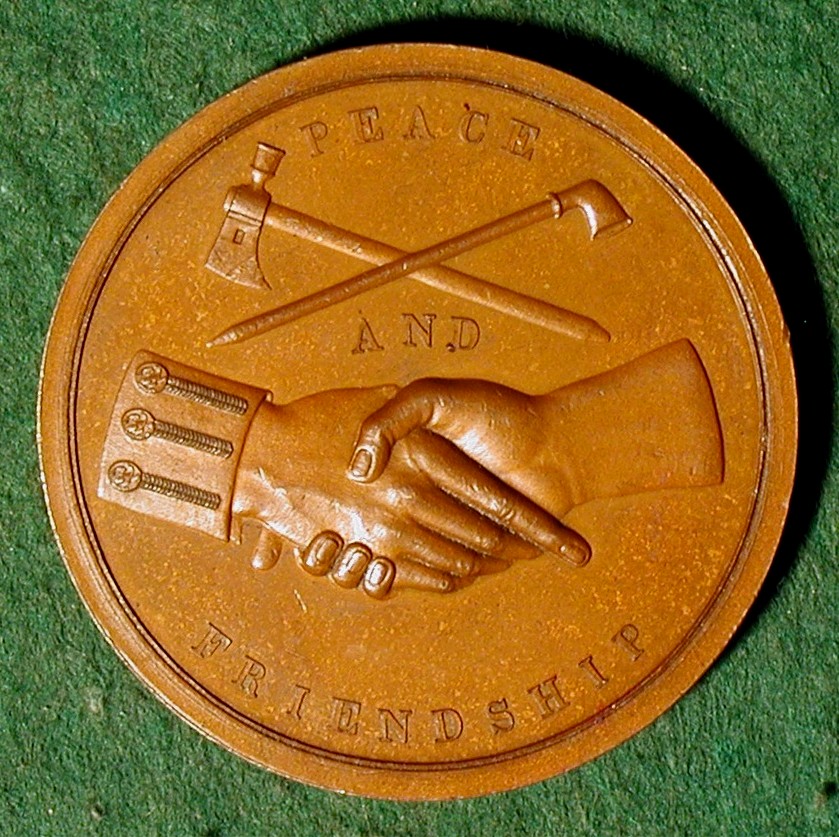|
JOHN ADAMS INDIAN PEACE MEDAL by Moritz Furst (Obv.) & John Reich (Rev.), Sc.:
USA, 1797*, Bronze, 51mm John Adams (1735-1826) was the second President of the United States (1797–1801), having earlier served as the first Vice President of the United States under George Washington (1789-1797). He was a member of the Federalist Party, winning the election as president over Thomas Jefferson, representing the Democratic-Republican party. Adams, an early supporter of the American Revolution, was a member of the First Continental Congress and played an important role in drafting the Declaration of Independence and the United States Constitution. He evidenced great judgment in evaluating his contemporaries as he nominated George Washington to be commander-in-chief, and 25 years later nominated John Marshall to be Chief Justice of the United States. While president, Adams built up the army and navy in the face of an undeclared naval war (called the "Quasi-War") with France, 1798–1800. A major accomplishment of his presidency was his peaceful resolution of this conflict in the face of Alexander Hamilton's opposition. However, during this period he also signed the highly controversial Alien and Sedition Acts, which many thought to be unconstitutional and which was a major issue in his subsequent campaign against Jefferson, who opposed its provisions. Jefferson won this election and pardoned many convicted under these acts. No official Indian peace medals were struck during the John Adams Presidency, presumably because a sufficient quantity of the Washington Seasons medals were available for distribution at the time. *Although the obverse die is unsigned, authorities agree that it was executed by Moritz Furst, probably between 1825 and 1839. Julian speculates it was made sometime during the presidency of John Adams’ son, John Quincy Adams (1825-1829). This small Adams medal was the only John Adams medal available to collectors until about 1905 when a three inch die was prepared so that an Adams medal could be sold to the public in the same size as all other presidential and Indian Peace Medals (from Levine). LINK to Medallic History of Slavery: Racial Oppression as Chronicled by Historical and Commemorative Medals (by Benjamin Weiss)
|
|

